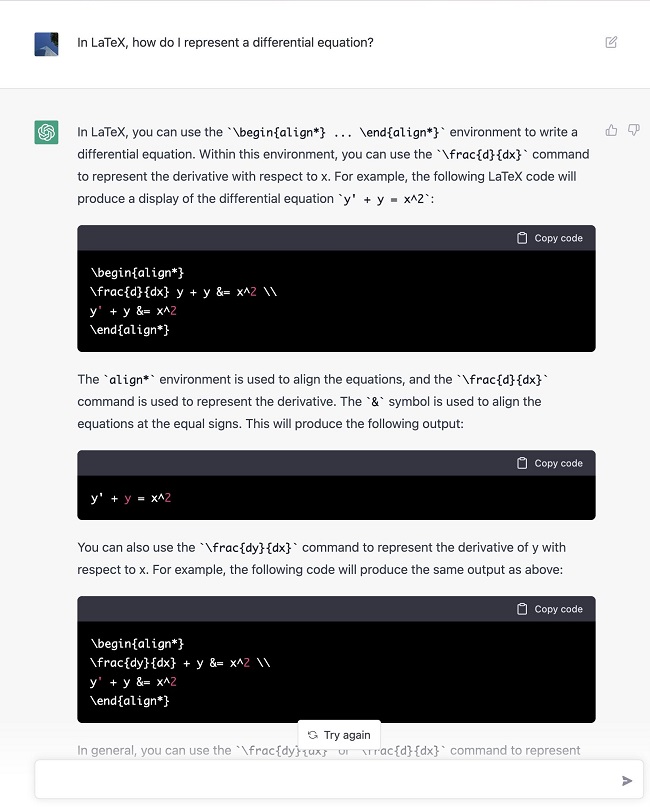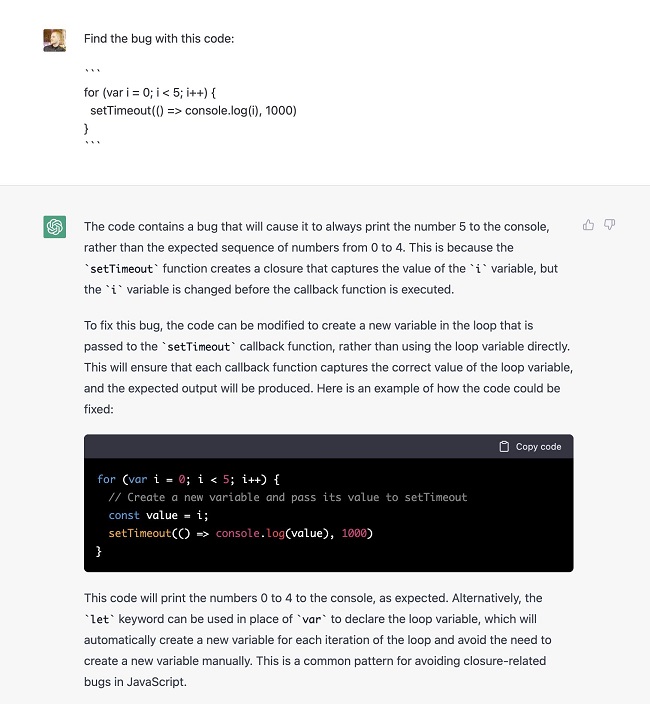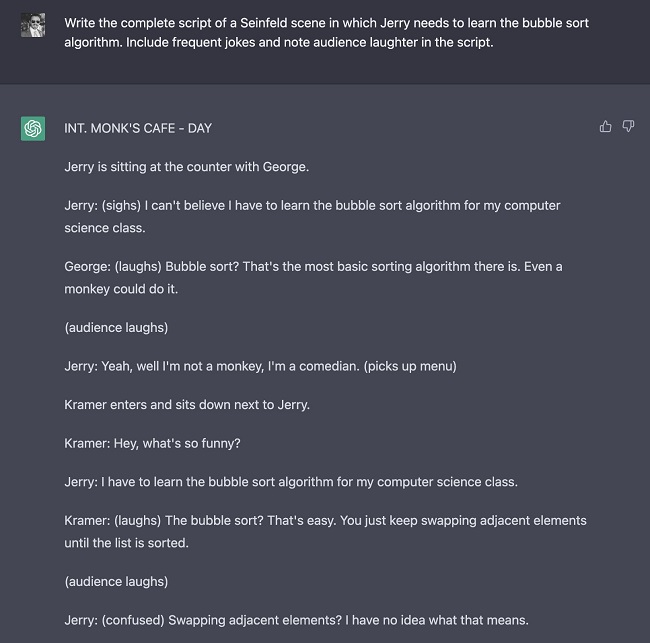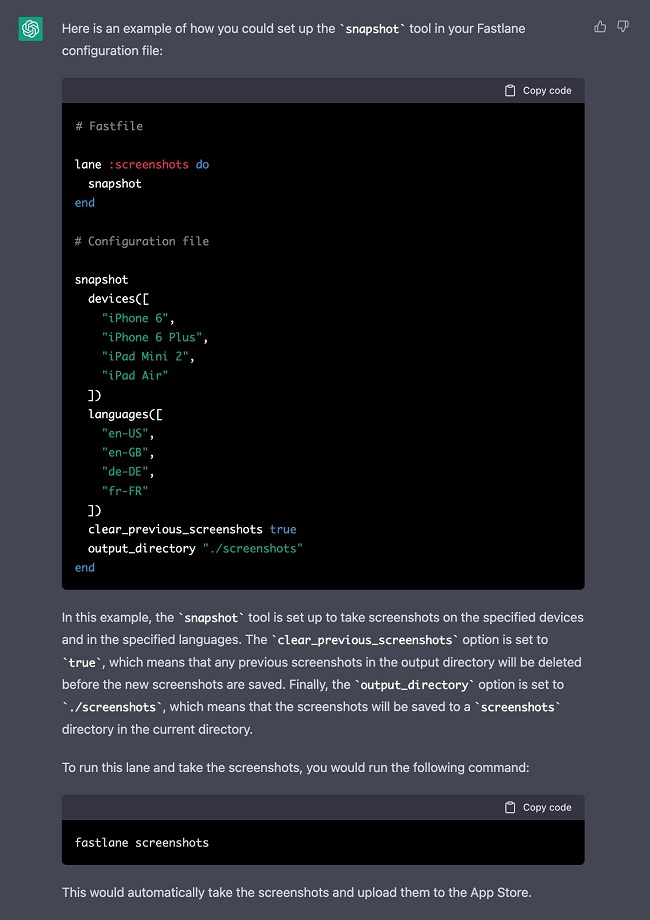The ability of AI to detect and learn patterns in data, and translate them into useful technology, has proven to be important for many companies, from healthcare providers to subscription delivery services.
Business applications of AI in the last 12 months range from those designed to increase productivity and efficiency in customer service, and the options keep expanding.
This is where applications such as ChatGPT have been able to thrive and change the world as we know it.
What Is ChatGPT?
ChatGPT is the latest viral sensation from San Francisco-based OpenAI startup.
ChatGPT is a free computer program that uses artificial intelligence (AI) to comprehend and react to natural language text, just like a human would. It can respond to questions, write sentences and even chat with you.
What Can ChatGPT Do?
ChatGPT can write emails, essays, and poems, answer questions or create lines of code in real time. This technology can also be used to create virtual assistants or quickly respond to customer inquiries.
This program uses a deep learning technique called “transformer architecture” to analyze several terabytes of data containing billions of words to generate answers to stimuli or questions.
ChatGPT’s predecessors include GPT-3, which also extracts text, but is trained in the large data processing. While this makes GPT-3 more powerful, ChatGPT is faster, can generate human-like responses, and is publicly available.
The bot works in the same way that AI-generated tools like DALL-E 2, Midjourney, and Stable Diffusion do – but just as those programs can create unrealistic images, ChatGPT is not always safe.
Limitations Of ChatGPT
There are a few limitations to ChatGPT and other similar chatbots.
First, its quality depends on the data it has been trained in, so it will not be able to generate a response to a stimulus or situation it has never seen before.
In addition, language models such as ChatGPT cannot provide personal or emotional support or engage in deep conversations on complex topics. They are only designed to generate text based on the patterns in the data it has been trained on.
How To Use ChatGPT
The ChatGPT webpage is simple and includes fields for results to be filled in and a text box at the bottom of the page for users to submit requests. You can start with a question, however, OpenAI recommends entering a statement to get the best results.
For example, typing “explain how the universe was created” will bring more results in a paragraph than “how the universe was created”, although both queries will bring results.
You also have the option of submitting specific requests for articles with several paragraphs or Wikipedia pages.
If there is enough information, the generator will use the full details to execute the rules. Otherwise, ChatGPT may start filling those gaps with bad data. OpenAI says that such a situation is rare.
However, you have the option of continuing to enter questions until you close your browser or refresh the thread to clear your previous questions. You also have the option of using ChatGPT in dark mode or light mode.
Real-World Applications of ChatGPT in Conversational AI
ChatGPT was released on December 1, 2022. People are going crazy with its results and more and more individuals and businesses alike have taken note of this technology.
Let’s take a look at a few examples.
1. Google vs ChatGPT results
Is Google a thing of the past? This tweet shows the results Google and ChatGPT returned for several queries.

The results returned by ChatGPT are contextual and useful without additional programming. Some of the sample questions tested in this experiment are:
“In Latex, how do you represent different equations?”
“What are the limitations of types in TypeScript?”
“How do I write a random design algorithm in a brainstorming session?”
2. Debug code
ChatGPT is a great debugging tool. Not only does it fix the problem but explains the entire process as well.

3. Write a scene from Seinfeld
ChatGPT has written a Seinfeld scene in which Jerry must learn the bubble algorithm.

4. Simple coding
Surprisingly, ChatGPT is also very helpful for coding-related queries, providing relevant feedback in record time.

The Future of Conversational AI
If you’ve ever had a human-like conversation with a chatbot, chances are you’re conversing with AI technology. Conversational AI has been around for a while now, and one of the main reasons for its success is that it creates “human” conversations with users.
It is expected that the global market for conversational AI, including chatbots and intelligent assistants, will grow at a CAGR of 22% between 2020 and 2025, and chatbots currently represent the use of AI in – commonly used in business.
Their adoption rate is expected to nearly double in the next two to five years. ChatGPT’s future impact on the AI conversation field is significant. Its ability to produce human-like text will enable the creation of advanced chatbots and other conversational AI tools that can better understand human intent and emotions and deliver personalized experiences.
Conclusion
The thing that makes ChatGPT stand out from other AI technologies is its ability to generate human-like text. Using state-of-the-art machine learning algorithms, ChatGPT can understand and respond to natural language input in a way that is almost unrecognizable to humans.
It is trained on large datasets of human-generated text, such as books, articles, and conversations. This allows him to learn the patterns and nuances of human language and create text that resembles how a human would write or speak. This has many thrilling implications for the future of AI, so watch this space.





Tell us your thoughts in the comments